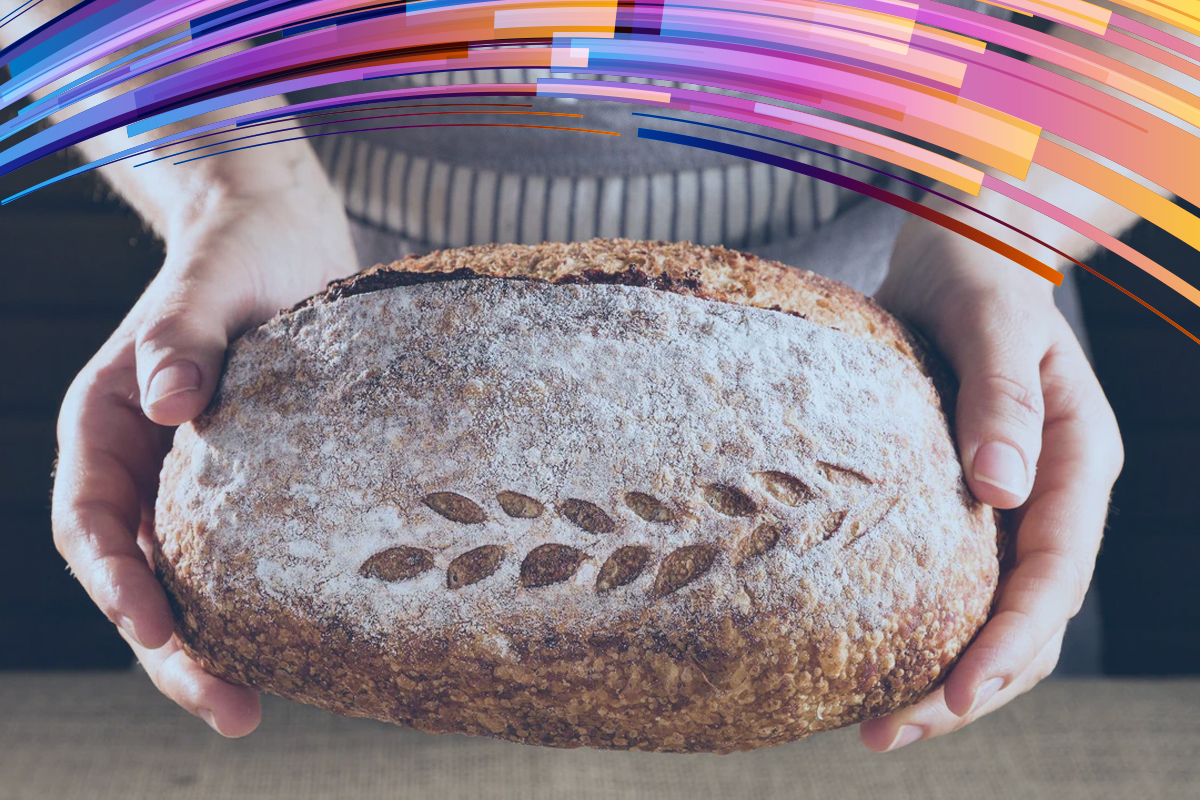Craving that delightful aroma of freshly baked sourdough wafting through your home? Look no further! In this comprehensive guide, we’ll walk you through the process of crafting your artisanal sourdough bread right in your kitchen. With just a few simple ingredients and a bit of patience, you’ll soon be enjoying delicious, homemade loaves that rival those from your favorite bakery.
Introduction to Sourdough Bread
Sourdough bread is a beloved classic, known for its tangy flavor, chewy crust, and soft interior. Unlike traditional bread recipes that rely on commercial yeast, sourdough utilizes a natural fermentation process driven by wild yeast and lactic acid bacteria. This results in a unique flavor profile and improved digestibility, making it a favorite among bread enthusiasts.
Ingredients
Before diving into the baking process, let’s gather our ingredients. Here’s what you’ll need:
– ¼ cup (50 g) active sourdough starter (100% hydration)
– 1 ⅓ cups + 2 tablespoons (350 g) water
– 2 teaspoons (10 g) fine sea salt
– 4 cups + 2 tablespoons (500 g) bread flour
Step-by-Step Instructions
1. Mixing the Dough
Transfer 50g of active starter and 350g of water to a large mixing bowl. Stir to distribute the starter evenly. Add 500g of bread flour and 10g of sea salt to the bowl and use a stiff spoon or your hands to bring the ingredients together until they form mass and there are no dry bits of flour left in the bowl.
2. Resting Period
Cover the bowl and let the dough rest at room temperature for one hour.
3. Stretching and Folding
- Wet your hand to prevent sticking.
- Pick up the dough from one side and stretch it up on top of itself. Turn the bowl a quarter turn and repeat until you’ve completed a full circle, forming a tight ball.
- Cover the bowl and let the dough rest for 30 minutes.
- Repeat the stretching and folding process to help build the final loaf’s volume.
4. Bulk Proofing
Cover the bowl and allow the dough to rise for 7-10 hours at room temperature until it has increased in volume by 50-75%. not double, when it is ready to shape.
(If the dough has doubled in size and/or is difficult to shape, it may have over-fermented. Reduce the proofing time for your next bread.)
5. Second Shape and Rise
Spread the dough on a surface sprinkled with a little flour. Shape the dough into a ball by pulling the four edges of the dough to the middle. Turn the dough over so that the seam side is down.
Use your hands to gently press the dough together, then pull and roll it toward you until it forms a tight skin on the outside.
Center the dough on a piece of parchment paper, seam side down. Use the parchment paper as a rope to lift the dough and transfer it to a medium bowl.
Cover the bowl with a tea towel and let the dough rest at room temperature for 1-2 hours.
Use your thumb to make an indentation in the dough about half an inch deep. If the indentation returns quickly it needs more time to rise
6. Score and Bake
- Preheat the oven, with a Dutch oven inside, to 450°F (232°C) for 30 minutes.
- Score the top of the dough with a razor or sharp knife.
- Using the parchment paper as a sling, transfer the dough into the preheated Dutch oven.
- Bake with the lid on for 20 minutes, then remove the lid and bake for an additional 25-30 minutes until golden brown.
Tips and Tricks
(The internal baking temperature should be around 205-210°F (96-99°C) using a digital food thermometer.)
Cool:
Transfer baked bread to a cooling rack for 1-2 hours before slicing. The bread will continue to cook inside during this time. If you cut it too early, it will result in a sticky loaf.
Storage:
Keep bread at room temperature, in a baking bag, wrapped in a kitchen towel or beeswax wrap. You can also store bread, cut side down, on a cutting board with a cake stand covering the bread. Don’t get cold.
Freeze whole loaves or individual slices tightly wrapped in plastic wrap and placed in a freezer-safe container for up to 3 months.
NOTES
This recipe was tested in a 68°F (20°C) kitchen. If your kitchen is colder, rising times will take longer, and if it’s warmer, less time.
If using all-purpose flour reduce water to 325g. Add more if necessary during the first set of stretches and folds.
You can also use a 9 x 5-inch baking pan, lightly greased. After the first rise, shape the dough and place it in the tray, seam side down. Allow it to rise again. Bake in a preheated oven at 375°F (190°C) for about 45 minutes or until the internal temperature reaches 190°F (88°C).
Nutrition Information
- Serving Size: 1 slice
- Calories: 154 kcal
- Carbohydrates: 31g
- Protein: 5g
- Fat: 1g
- Saturated Fat: 1g
- Sodium: 325mg
- Potassium: 64mg
- Fiber: 2g
- Sugar: 1g
- Calcium: 9mg
- Iron: 1mg
Conclusion
With this beginner-friendly sourdough bread tutorial, you’re well-equipped to embark on your bread-baking journey. Get ready to impress your friends and family with your homemade creations! Remember, practice makes perfect, so don’t be afraid to experiment and tailor the recipe to your taste preferences. Happy baking!

